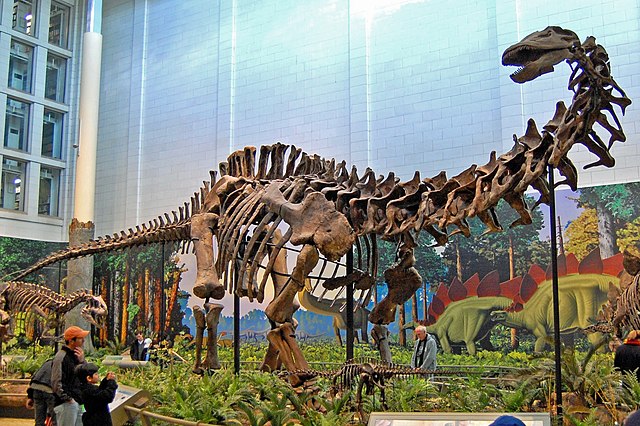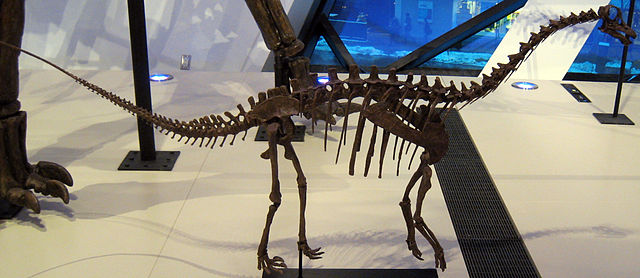Diplodocoidea is a superfamily of sauropod dinosaurs, which included some of the longest animals of all time, including slender giants like Supersaurus, Diplodocus, Apatosaurus, and Amphicoelias. Most had very long necks and long, whip-like tails; however, one family are the only known sauropods to have re-evolved a short neck, presumably an adaptation for feeding low to the ground. This adaptation was taken to the extreme in the highly specialized sauropod Brachytrachelopan. A study of snout shape and dental microwear in diplodocoids showed that the square snouts, large proportion of pits, and fine subparallel scratches in Apatosaurus, Diplodocus, Nigersaurus, and Rebbachisaurus suggest ground-height nonselective browsing; the narrow snouts of Dicraeosaurus, Suuwassea, and Tornieria and the coarse scratches and gouges on the teeth of Dicraeosaurus suggest mid-height selective browsing in those taxa. This taxon is also noteworthy because diplodocoid sauropods had the highest tooth replacement rates of any vertebrates, as exemplified by Nigersaurus, which had new teeth erupting every 30 days.

Diplodocoidea
Sauropoda, whose members are known as sauropods, is a clade of saurischian ('lizard-hipped') dinosaurs. Sauropods had very long necks, long tails, small heads, and four thick, pillar-like legs. They are notable for the enormous sizes attained by some species, and the group includes the largest animals to have ever lived on land. Well-known genera include Apatosaurus, Argentinosaurus,
Alamosaurus, Brachiosaurus, Camarasaurus, Diplodocus, and Mamenchisaurus.
Sauropoda
Reconstruction of Ampelosaurus
Some sauropods, such as Alamosaurus sanjuanensis, formed herds segregated by age.
Cast of Toni, a juvenile brachiosaurus (restored as a diplodocid)





